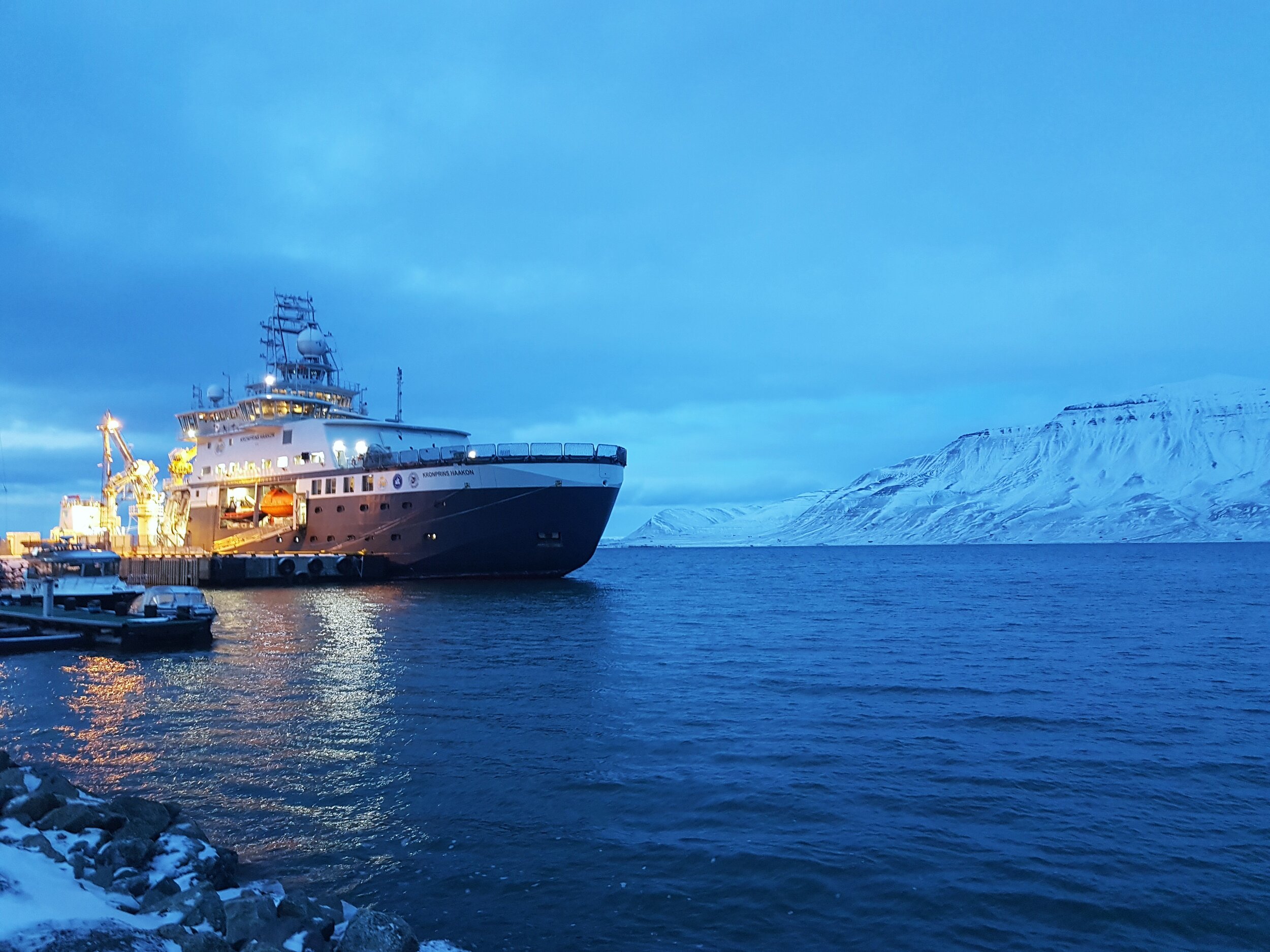Take the tour: Research Vessel Kronprins Haakon
All photos and text by Mariana Esteves.
Blog originially posted on the CAGE website.
On the 18th October, there was a sense of excitement in the air as scientists from CAGE, UiT, NGU and numerous other institutes arrived to Longyearbyen, Svalbard, ready for their next exciting adventure. A three-week research cruise to Western and Northern Svalbard, on-board the new Norwegian icebreaker, RV Kronprins Haakon.
Breath taking view from the observation deck of Research Vessel Kronprins Haakon.
The RV Kronprins Haakon (KPH), built to operate in challenging ice conditions is fully equipped with the very latest high-tech equipment, enabling complex studies to be undertaken. The cruise will carry out important research for multiple projects such as, Tromsø Research Foundation funded SEAMSTRESS, and ERC funded AGENSI. Over the next few weeks we will be posting the progress of the cruise.
Safety briefing by the chief officer and first mate. It may look funny, but a survival suite is good to have.
On the sleepy morning of the 19th October, scientists from all around the world, many of whom are sailing on-board the KPH for the first time, eagerly boarded the vessel ready for the expedition. We started the day with a scientific meeting by the chief scientist, Dr. Jochen Knies, who introduced us to the ship and the day’s activities, which primarily included the preparation of the equipment and procedures that will be undertaken throughout the expedition. Following this, the chief officer and first mate gave us a safety briefing and quick tour of the ship.
The KPH has 9 decks, all of which have been assigned a ‘theme’, ranging from micro- and macro-organisms in the lower decks, to marine and terrestrial mammals in the central decks, to birds and northern lights in the upper decks. Every door has either a picture of an animal, or a place name, making it very interesting to walk around and see how many you can recognise.
Euphausia superba (Antarctic Krill) on a door on the 3rd deck is a species of krill found in the Antarctic waters of the Southern Ocean
The laboratories where the marine sediment cores and samples collected will be examined is located on the 3rd deck, which is the same floor where there is a moon pool (A moon pool on a marine research vessel is an opening in the floor or base of the hull giving access to the water below, allowing technicians or researchers to lower tools and instruments into the sea). Here, the main drilling and water sampling operations take place. Hundreds of samples will pass through the moon pool during these three weeks, ready for further investigations at the scientists home institutes. The laboratories are fully equipped for high quality research and sample processing.
Dr. Renata Lucchi giving us a tour of the brand new educational laboratory on-board. The ship was fully operational and delivered to the Norwegian research institutions in 2018.
Located on the 5th deck is the mess hall where we can enjoy delicious meals and snacks throughout the day. In addition, the day room where scientists can meet, discuss and have a warm drink, is located here.
Scientists enjoying their break with some nice discussions, warm drinks and view of the port in Lonyearbyen!
The upper decks have a combination of both living and work spaces, with the instrument room where the geophysical data will be collected and processed is located on deck 7. The bridge and control room is located in deck 8 and on deck 9 is the observation deck where scientists can meet and relax, while watching the land- and seascapes go by.
Instrument room ready to go!






